Jeffrey Gibson’s studio could be considered his greatest work of art.
Just a decade ago, Gibson embarked on a major project, converting an old school at Hudson, New York, in a 14,000 square feet workshop and workshop. Ten years later, the project is almost complete. Set on four acres of rolling country land, the studio is, in every way, a place of beauty, filled with hand-woven rugs, art that Gibson admires, and music (always music). It’s here, in relative isolation, that Gibson and his studio team plan, brainstorm and craft, but also dance, dine and laugh. “I like having everything in one place,” says Gibson.
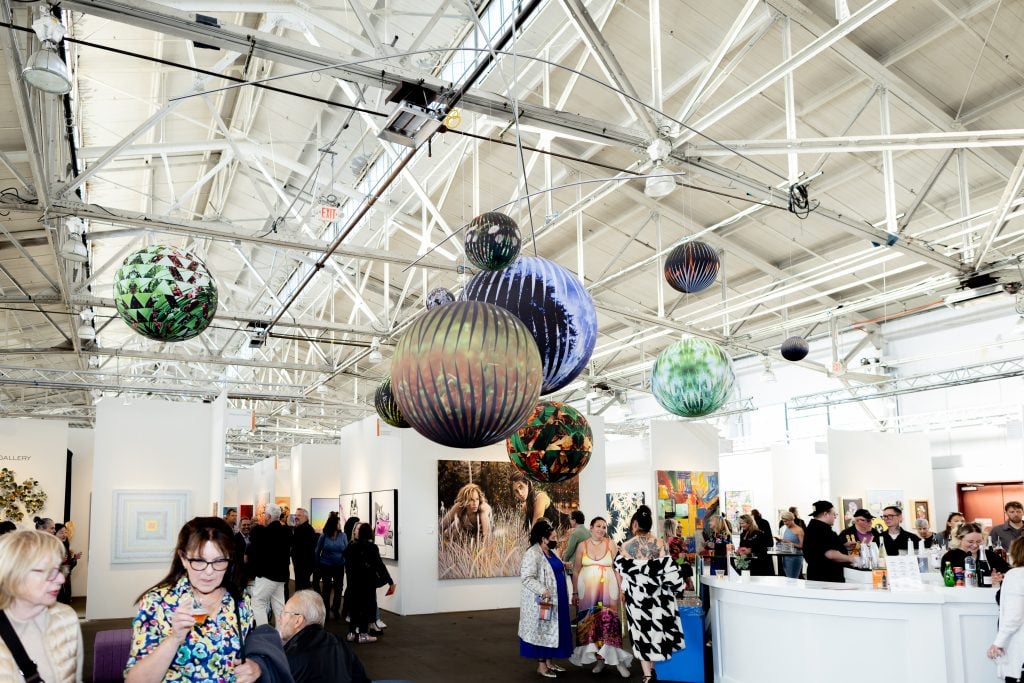
Jeffrey Gibson, The Many Worlds (2023). Courtesy of Art Market San Francisco Fort Mason Pavillion. Photography by Drew Bird Photography San Francisco.
It’s been full days in the studio lately. The Choctaw-Cherokee artist, who is famous for his electric-colored multimedia works that fuse Native American iconography with the imagery of contemporary culture, has a busy few months ahead of him. Last weekend, Gibson introduced The many worlds, one hanging mobile that models the solar system featured at Art Market San Francisco in collaboration with ICA San Francisco – the “This Burning Call” exhibit closed at the museum on Sunday. Now Gibson is gearing up for his upcoming solo show “Once More With Feeling” at the Jessica Silverman Gallery in San Francisco in June, followed by solo exhibitions at both Stephen Friedman, London, and Sikkema Jenkins, New York, in the fall.
With this busy exhibition schedule, we caught up with Gibson in his studio. He told us what’s on his playlist, how he creates a cozy studio space, and what he does right before he leaves the studio.
Tell us about your workshop. Where is it, how did you find it, what type of space is it, etc. ?
I moved to Hudson, New York in 2012 with my partner. We were looking to get out of town and said let’s try and see if we’re happy. The studio was a turn-of-the-century schoolhouse in the hamlet of Clare, just outside Hudson. We saw it when we first moved here. I wasn’t able to buy a studio at the time, but a few years later it was still available. I had never owned a building before. I had never had to renovate a building, so I was naive. The renovation process was doable but was extensive. We are still renovating to bring it to its ultimate shape, but I would say we are about 75% there. I had never had so much space before. When you first move into such a large space, it feels overwhelming. And then over the years, it fills up!
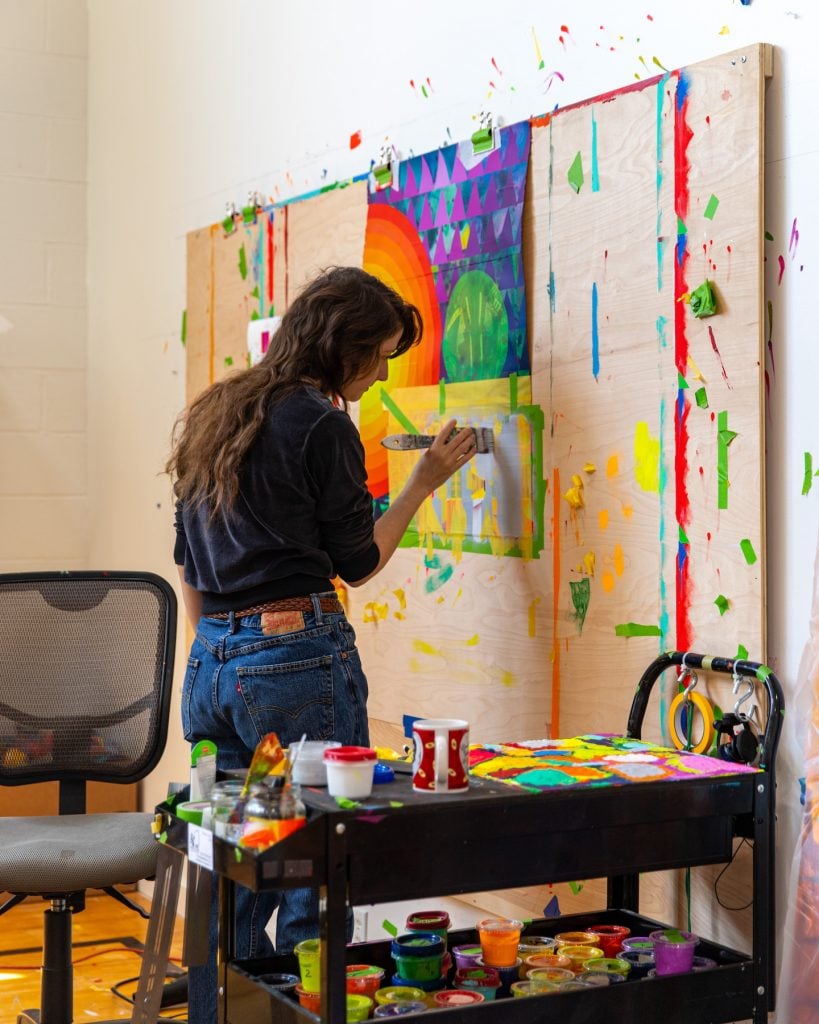
Courtesy of the artist and his studio.
Do you have studio assistants or other team members working with you? What are they doing?
We oscillate between 14 to 17 people. The workshop is basically divided into two halves: one focuses on painting and the other on manual work, such as beading and sewing. We have someone who mainly works with rebar welding and creating structures for things. And I have two studio managers, a production manager and a paint manager. Many of these people have been here for a while, some have been here for nine years. One person has been here for 11 years. We have what I call a studio memory. We are very close and I want everyone to be happy and feel good working here. We are a very functional space and I don’t micromanage people. Everyone can direct their day to some degree.
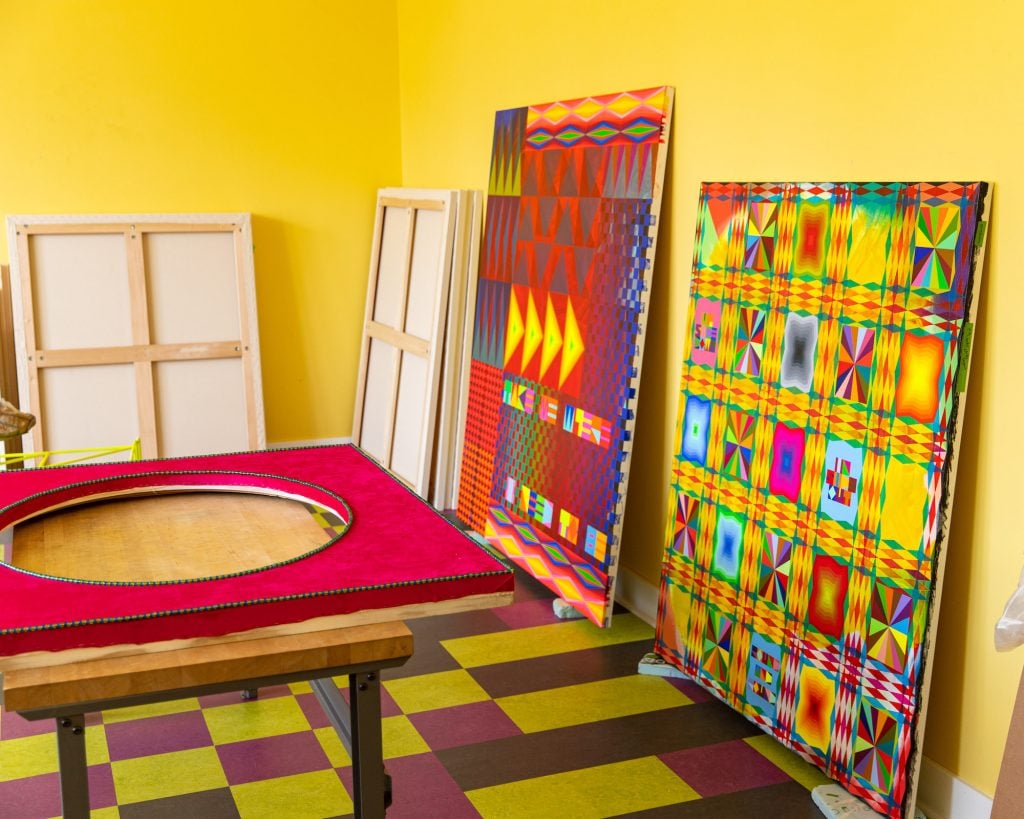
Courtesy of the artist and his studio.
How many hours do you typically spend in the studio, what time of day do you feel most productive, and what activities take up the majority of that time?
I have two small children. Bringing the team together, I learned that I was going to start a family. My children are four and about to turn seven. They are both in school so getting them out the door is my first priority. I arrive at the studio between 9:30 and 10 a.m. and my day ends at 5 p.m. My team makes this possible. Bill and Brian, who are the directors of the studio, are the people I go to for meetings and what is planned. The goal is that I can work in the studio for half a day without any real direction as to what I’m supposed to do.
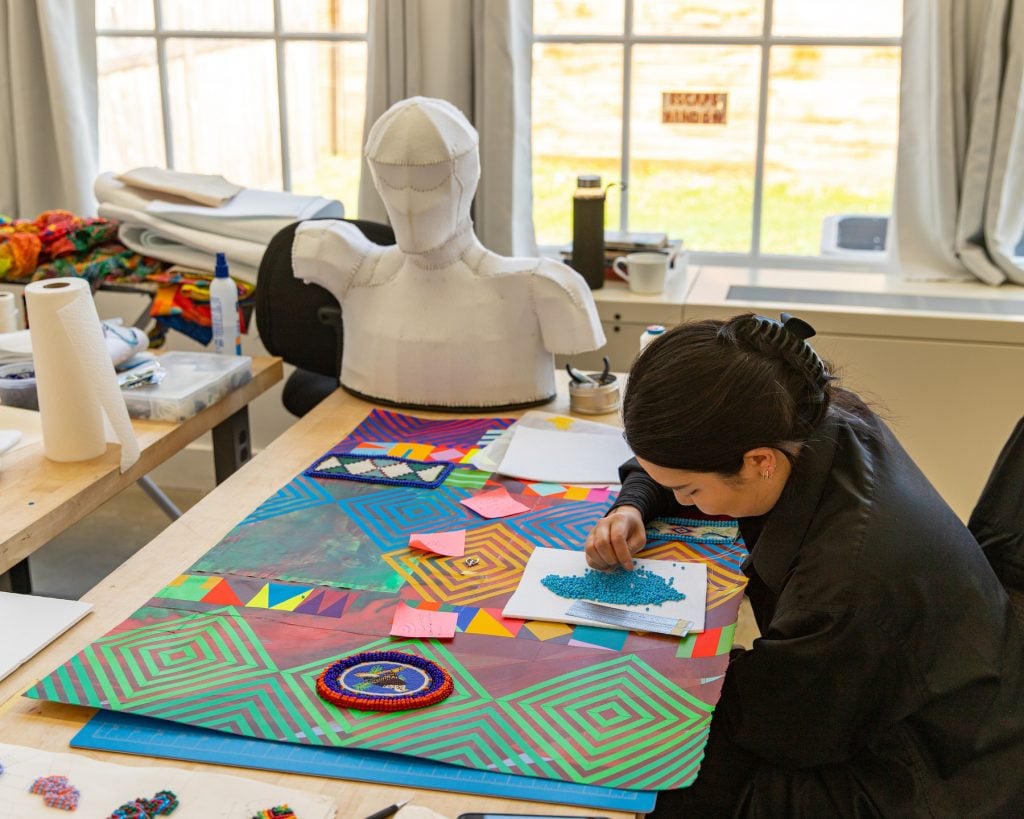
What tool or art supply do you most enjoy working with, and why?
Recently, I got really interested in rules. There is a lot of geometry in painting. Rules – when you get one that’s actually made for what you’re doing is pretty amazing and keeps everything tidy. I also absolutely must have music. Some people in the studio are playing really good music.
What atmosphere do you prefer when you work? Is there anything you like to listen to/watch/read/watch, etc. in the studio to inspire you or as ambient culture?
In my ideal world, we would have a resident DJ. We need access to good coffee, good tea. We have a food preparation area where people can make their own food. I like a very laid back environment. We have beautiful pink walls here and lots of sunshine. The challenge for me, like artists, including myself when I was younger, was to work in whatever space was available. As I was able to choose this space, I wanted it to be pleasant so that I would have fun coming here. We had real hand woven rugs. I am a textile collector, there are a lot of cushions. And art on the walls.
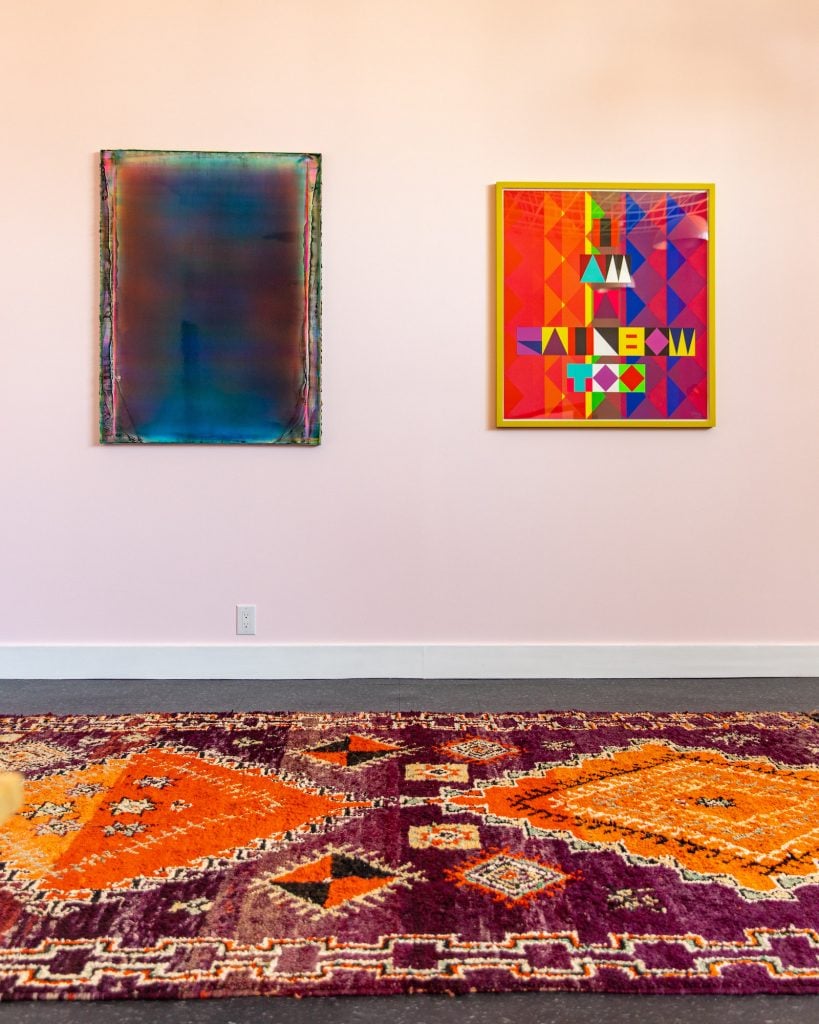
Courtesy of the artist and his studio.
What images or objects do you look at while you work? Do you have other works by artists in your studio?
I have paintings that I have collected over the years. There is photography in our living room. I have a sculpture and some works on paper by Rick Bartow. We have a painting by Danielle Norris, who works here. I have one Yellow Quick-to-See Smith as I arrive at thelook every day. Also, lots of Corita Kent. Corita Kent was probably the first artist I started collecting. I slowly collected his works whenever I could find one.
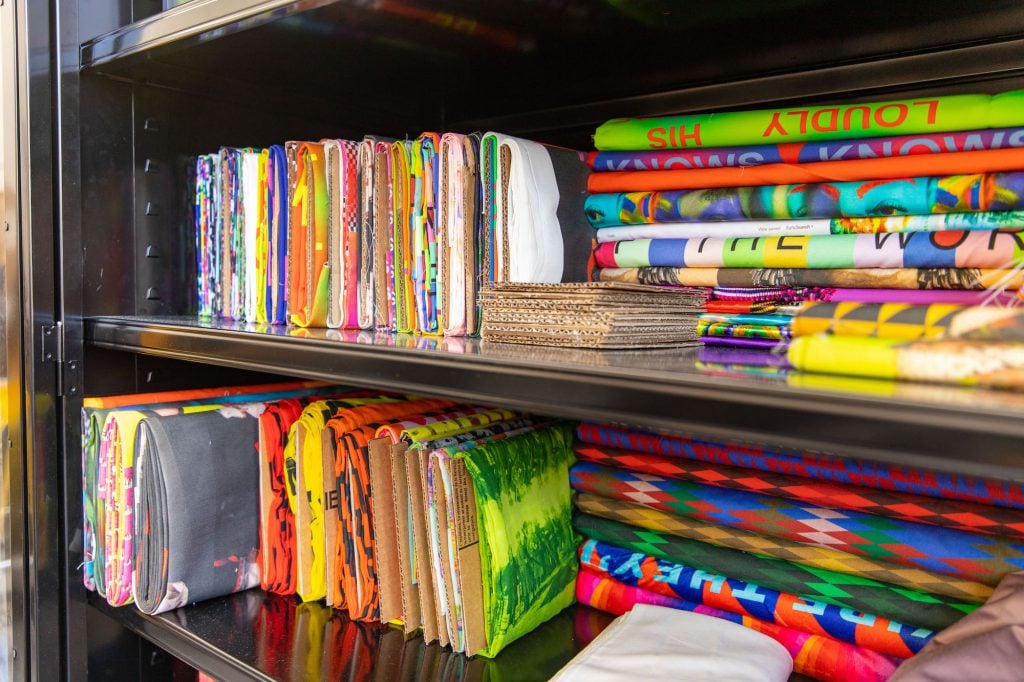
What’s the last thing you do before leaving the studio at the end of the day (other than turning off the lights)? what do you do right after
I like to have a cup of coffee to have some energy when I get home. When I get in the car, the first thing I do is choose the soundtrack for my ride home. Yesterday was Les Communards. I always listen to music, partly to hear the lyrics. It takes me back to different times – music is the trigger for what was going on socially and politically at the time, as well as personally. With Les Communards, in the late 80s, well, I graduated from high school in 1990. I just thought about what was happening at that time. This is my alone time. Then I come home and the children come running.
Follow Artnet News on Facebook:
Want to stay one step ahead of the art world? Subscribe to our newsletter to receive breaking news, revealing interviews and incisive reviews that move the conversation forward.
